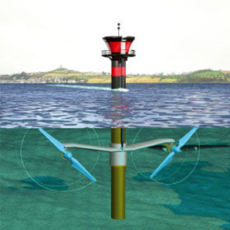
The world would be in rough waters if it weren’t for the ability to transport goods by ship. Despite all the advances in travel technologies, from road to rail to air and even space, nothing comes close to the efficiency of one of the earliest methods of getting from point A to point B.
Approximately 90% of products that enter into the marketplace are inevitably transported there by sea, usually in huge container ships. The math is simple: say you gotta send a Land Rover across the Atlantic; flying it will emit over 14,330 lbs of carbon dioxide equivalent (CO2e), while shipping it will burp out a measly 330 lbs of that ozone killer. To put that in perspective, a tree absorbs 48 lbs of CO2 per year- and that’s a particularly hungry tree!
Though it’s much better transporting products by sea than by air, the shipping industry runs into choppy seas when the cumulative amount of emissions is calculated. Because such a large slice of the pie is gobbled up by the maritime freight, that barely audible CO2e burp turns into an almighty foghorn. The approximately 52 thousand ships in use are reported to be responsible for 4.5% of all the greenhouse gas emissions globally.

The waters become all the murkier when considering that the industry relies on heavy fuel to power its engines. Heavy fuel is a byproduct derived from the refinement process of crude oil. The kind way of looking at heavy fuel is to consider it a virtue that every part of the cow is consumed, so to speak. If you were going to be nasty about it, heavy fuel is basically toxic sludge, the waste that other industries wouldn’t ever consider pumping into their tanks. When it comes down to it, the cold hard numbers don’t allow room for debate: because it’s so impure, the exhaust after burning this type of fuel contains high quantities of greenhouse gases, with just 15 merchant ships producing as much sulfur dioxide as does every car in the world combined.
So there’s a lot of room for improvement. Good thing that engineers and industry leaders are already on the case! There’s a ship docked in the Port of Long Beach that has incorporated solar panels to power everything from the lights to the turbines. It’s the world’s first cargo ship to be powered in part by renewable energy.The possibilities get as wild as the wind, with proposals to build ships that will incorporate sails in conjunction with solar panels to reduce the energy footprint by as much as 10%- all with technologies that can be incorporated tomorrow.
However, the shipping industry is notoriously thrifty. Faced with rising oil prices, several companies ordered their fleets to slow down from the typical 24 knots to an average of 16 knots in an effort to save on fuel. Though the technology to create greener cargo ships does exist, ship building ain’t cheap. The problem isn’t so much forking up a little more for greener technologies if you’re going to build a ship anyway, it’s that these companies invested a lot of capital in their existing fleet and they are trying to get the most bang for their buck before retiring them.
Fortunately, there has been an effort internationally to curb the shipping industry’s carbon emissions. The United Nations’ International Maritime Organization (IMO) has, as of April of this year, come up with a strategy to halve the emissions of several types of ships, including merchant ships, by 2050. The plan includes several ambitious markers of achievement (such as cutting carbon emissions by 40% by 2030) and intends to pressure companies to build new ships in accordance with energy-efficiency designs. Hopefully, the wind will be in their sails and it’ll be smooth sailing for the IMO on their journey to that (clearer) horizon.


